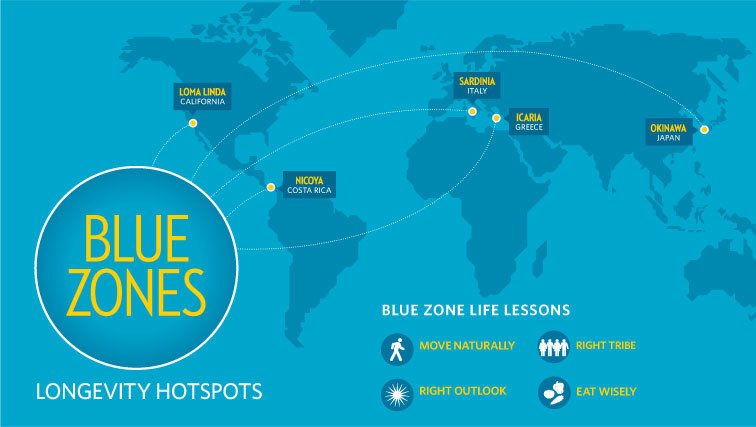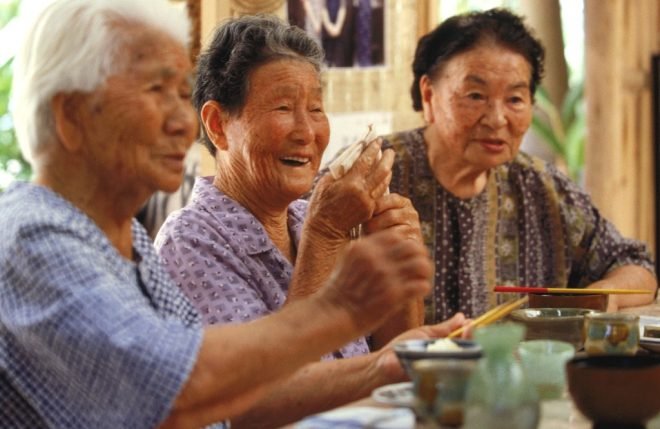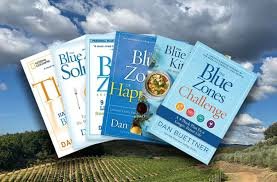Want to live to 100? Learn about the Blue Zones.
What are the Blue Zones?
Demographic work was performed by Gianni Pes and Michel Poulain in 2004, in which they identified regions in the world with a high concentration of centenarians that are living healthy and vibrant lives. The journal of Experimental Gerontology published their findings, and the first region they identified was Sardinia’s Nuoro Province in Italy. Dan Buettner joined the team, and they later identified five longevity hotspots around the world and dubbed them the Blue Zones.
The researchers used a map of the world and drew concentric blue circles highlighting the regions of extreme longevity and began to refer to this area inside the circle as a Blue Zone.
The Five Blue Zones are:
Sardinia, Italy.
Okinawa, Japan.
Nicoya, Costa Rica.
Icaria, Greece.
Loma Linda, California, USA.
Okinawa, Japan is renowned for having healthy super-senior citizens because they eat well, move, and spend time together.
The inhabitants in these Blue Zones have lifestyles that focus on food, community and healthy habits.
Dan Buettner and the team of demographers and researchers found that all the Blue Zone areas share nine specific lifestyle habits that they call the Power 9:
1. Move Naturally
The world’s longest-lived people don’t pump iron, run marathons or join gyms. Instead, they live in environments that constantly nudge them into moving without thinking about it. They grow gardens and don’t have mechanical conveniences for house and yard work.
2. Purpose
The Okinawans call it “Ikigai” and the Nicoyans call it “plan de vida;” for both it translates to “why I wake up in the morning.” Knowing your sense of purpose is worth up to seven years of extra life expectancy.
3. Downshift
Even people in the Blue Zones experience stress. Stress leads to chronic inflammation, associated with every major age-related disease. What the world’s longest-lived people have that we don’t are routines to shed that stress. Okinawans take a few moments each day to remember their ancestors, Adventists pray, Ikarians take a nap and Sardinians do happy hour.
4. 80% Rule
“Hara hachi bu” – the Okinawan, 2500-year old Confucian mantra said before meals reminds them to stop eating when their stomachs are 80 percent full. The 20% gap between not being hungry and feeling full could be the difference between losing weight or gaining it. People in the blue zones eat their smallest meal in the late afternoon or early evening and then they don’t eat any more the rest of the day.
5. Plant Slant
Following a predominantly plant-based diet with lots of vegetables, and fruit, beans-including fava, black, soy and lentils, is the cornerstone of most centenarian diets. Any meat is limited to approximately five servings per month. Serving sizes are 3-4 oz., about the size of a deck of cards.
6. Wine @ 5
People in all blue zones (except Adventists) drink alcohol moderately and regularly. Moderate drinkers outlive non-drinkers. The trick is to drink 1-2 glasses per day (preferably Sardinian Cannonau wine), with friends and/or with food. And no, you can’t save up all week and have 14 drinks on Saturday. (Please note, in Canada, recently, The Canadian Centre on Substance Use and Addiction (CCSA) published a report recommending that one should drink no more than 1-2 drinks per week instead of the old standard of 1-2 drinks per day.) Source
7. Belong
All but five of the 263 centenarians we interviewed belonged to some faith-based community. Denomination doesn’t seem to matter. Research shows that attending faith-based services four times per month will add 4-14 years of life expectancy.
8. Loved Ones First
Successful centenarians in the blue zones put their families first. This means keeping aging parents and grandparents nearby or in the home (It lowers disease and mortality rates of children in the home too.). They commit to a life partner (which can add up to 3 years of life expectancy) and invest in their children with time and love (They’ll be more likely to care for you when the time comes).
9. Right Tribe
The world’s longest lived people chose–or were born into–social circles that supported healthy behaviours, Okinawans created ”moais”–groups of five friends that committed to each other for life. Research from the Framingham Studies shows that smoking, obesity, happiness, and even loneliness are contagious. So the social networks of long-lived people have favourably shaped their health behaviours. Source
If you are interested in more information about The Blue Zones, consider reading Dan Buettner’s books and signing up for his newsletter (scroll to the bottom of the page)
Dan Buettner’s Books:
The Blue Zones.
Thrive.
The Blue Zones Solution.
The Blue Zones of Happiness.
The Blue Zones Kitchen.
Residents of the Blue Zones take charge of their lives by living simply and joyfully. They embrace community and spend time daily with their family and friends. What changes can you make in your life that aligns with The Blue Zone Philosophy?
Be well.
Anita
Resources
1. Blue Zones
2. Dan Buettner
DISCLAIMER; The information provided on County Yoga Loft’s website blog is for general health care informational purposes only. All information on the site is provided in good faith. However, it should not replace consultation or advice from a physician and/or other healthcare practitioners. The use or reliance of any information contained on this site is solely at your own risk.





